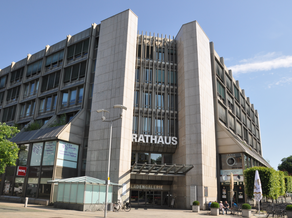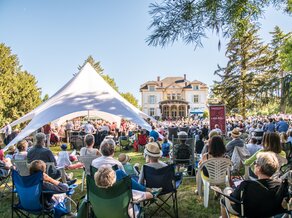Friedrich Hölderlin
Johann Christian Friedrich Hölderlin (1770 - 1843) came to Frankfurt am Main in January 1796 as court master to the prestigious family of the banker Gontard. He fell in love with the lady of the house, Susette Gontard. When the relationship threatened to become public, Hölderlin had to give up his job. At the suggestion of his student friend Isaak von Sinclair, he came to Homburg in 1798. At the time, Sinclair was a diplomat at the court of the reigning Landgrave Friedrich V Ludwig of Hesse-Homburg.
Hölderlin's first stay in Homburg
Hölderlin's first stay in Homburg lasted from September 1798 to the beginning of June 1800, during which time he was extremely productive. He wrote numerous poems, drafted the drama "The Death of Empedocles" and completed the second part of the novel "Hyperion". The first part of Hyperion - published by Schiller in the journal "Thalia" - was widely read at the court in Homburg.
The epistolary novel Hyperion was also the favorite reading of Princess Auguste of Hesse-Homburg, daughter of Landgrave Friedrich V of Hesse-Homburg, who ruled during Hölderlin's time. Hölderlin never met the princess in person. Nevertheless, he dedicated the ode to her on the occasion of her birthday in 1799: "To Princess Auguste von Homburg the 28th Nov 1799."
The poet left Homburg in June 1800 because he had not succeeded in establishing himself as a poet enough to live on. His financial reserves were exhausted. He returned to his native Württemberg, initially staying in Nürtingen and Stuttgart before accepting a new position as court master in Hauptwyl near St. Gallen in Switzerland. When this and another position as Hofmeister in Bordeaux fell through, he came to Homburg vor der Höhe for the second time in June 1804 after several intermediate stops.
Hölderlin's second stay in Homburg (as court librarian)
We have less information on Hölderlin from his second stay in Homburg. The arduous return journey from Bordeaux on foot and the death of his beloved Susette Gontard on June 22, 1802 caused a deep break in Hölderlin's life. Many friends had distanced themselves from him, only Sinclair still stood by him. Sinclair therefore brought him back to Homburg in June 1804 in the hope that Hölderlin would recover there and return to the fruitful days of his first stay in Homburg.
However, when Sinclair was arrested on February 26, 1805 for a suspected conspiracy against the Elector of Württemberg and deported to Ludwigsburg, Hölderlin was all alone in Homburg. He was also threatened with extradition to Württemberg, as he had taken part in a politically conspiratorial meeting there with Sinclair on June 19, 1804.
Hölderlin's health, which was already very poor, deteriorated considerably as a result of these circumstances. In addition, almost all of his friends had left him and his relationship with his mother was extremely strained. For this reason, Hölderlin was hardly in any condition to write poems or letters during his second stay in Homburg. When Sinclair returned to Homburg after his acquittal from the charge of high treason, he found a completely confused Hölderlin. In August 1806, he wrote to Hölderlin's mother that he could no longer provide for Hölderlin financially. She then decided to have him admitted to Dr. Autenrieth's psychiatric clinic in Tübingen. On September 11, 1806, Hölderlin's fate was sealed: he was forcibly placed in a carriage and taken to Tübingen. The dream of further years as a poet in Homburg was finally shattered.








